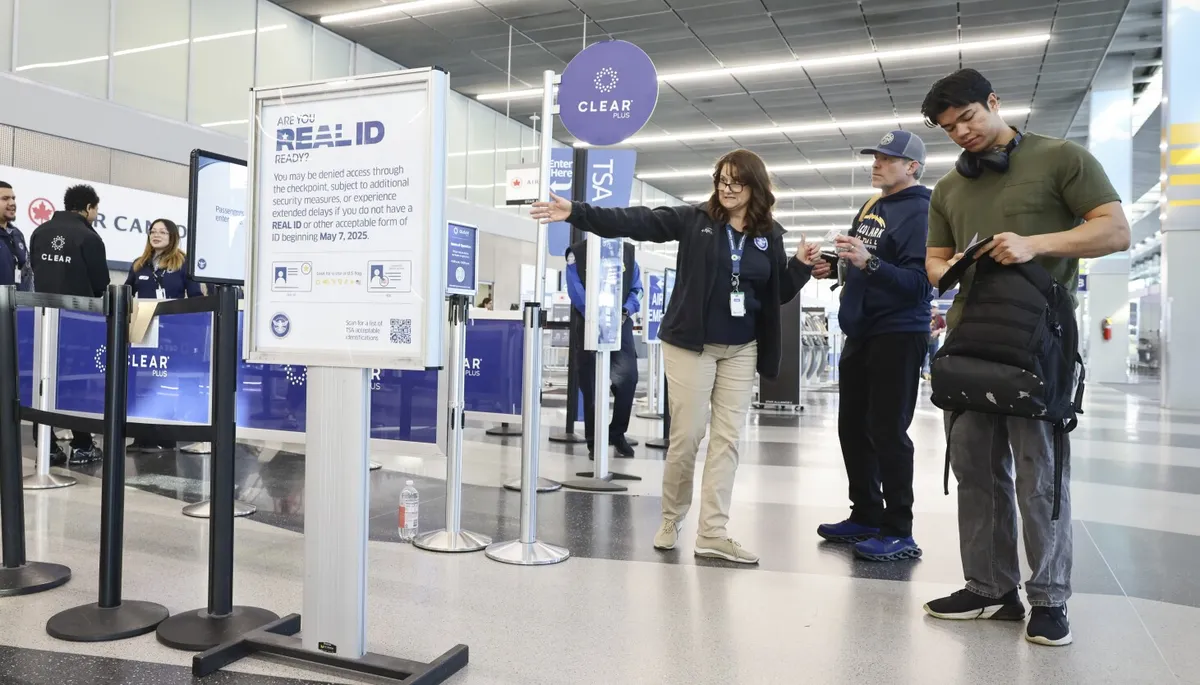
After a lengthy 17-year delay, the national mandate requiring Real IDs for domestic air travel officially began on Wednesday. However, the transition was not as straightforward as many had hoped. Passengers who did not possess the enhanced identification, or other acceptable alternatives such as a passport, were still permitted to board their flights, albeit with additional random security checks.
The changes were hardly noticeable at O’Hare International Airport, where travelers experienced an estimated wait time of just 5 minutes in the United Airlines terminal during mid-morning hours. Most of the passengers approached by reporters had either a Real ID or a passport, allowing them to pass through security without any issues. However, not all travelers expressed satisfaction with the new regulations.
Bonnie Kern, a traveler from Woodstock heading to Connecticut to visit family, voiced her frustration. After waiting for hours at the DMV to obtain her Real ID in preparation for the May 7 deadline, she was left with only a temporary paper ID while awaiting her actual card to arrive by mail. Airport security informed her that the paper version was insufficient, directing her to a separate line for additional checks. “How did I get this license?” she questioned, holding the paper ID that required the same proof of identity as the Real ID.
Kern arrived at the airport two hours early, anticipating longer lines, but was able to breeze through security without encountering any additional screening. According to the Department of Homeland Security, approximately 81% of travelers already possess IDs that meet Real ID requirements. However, Illinois is lagging, with less than 50% of ID holders in the state having obtained a Real ID, as noted by a spokesman for the Secretary of State’s office.
Despite being labeled a “deadline,” federal officials have clarified that passengers can still fly for the next two years without a Real ID. However, these travelers will receive warnings and will be subject to further screening. Jim Spriggs, the federal security director of Illinois for the Transportation Security Administration (TSA), stated that random security checks would be enforced to ensure compliance.
The rollout on Wednesday was further facilitated by the fact that the first day of Real ID enforcement typically sees fewer passengers, according to TSA spokeswoman Jessica Mayle. The Real ID initiative was originally recommended by the 9/11 Commission to enhance identification requirements for air travel. Although the program intended to make IDs more difficult to counterfeit was set to be enforced in 2008, its implementation has faced numerous delays over the years.
The announcement of a firm May 7 deadline led to a surge in demand for Real IDs nationwide, prompting the Illinois Secretary of State’s office to extend operating hours and increase appointment availability at DMVs across the state. Secretary of State Alexi Giannoulias even opened a new “supercenter” in downtown Chicago to accommodate the increased demand.
On the day the mandate went into effect, Giannoulias criticized Homeland Security Secretary Kristi Noem for her unclear messaging regarding the Real ID requirements. He argued that her statements incited panic among residents, as many were unaware that they could still fly without a Real ID. With long lines and extended wait times at state DMVs, Giannoulias assured the public that services would remain available after the May 7 deadline to accommodate ongoing demand.
Real IDs will now be required for domestic air travel and to access certain federal buildings and facilities. However, it is important to note that these IDs, identifiable by a gold star, are not mandatory for driving. Many travelers at O’Hare without Real IDs carried passports, which are accepted as valid identification. One such passenger, Al Swanson, 76, from Evanston, expressed his thoughts on the situation, comparing it to crossing international borders as he prepared to fly with his wife, Charlene, to Houston.